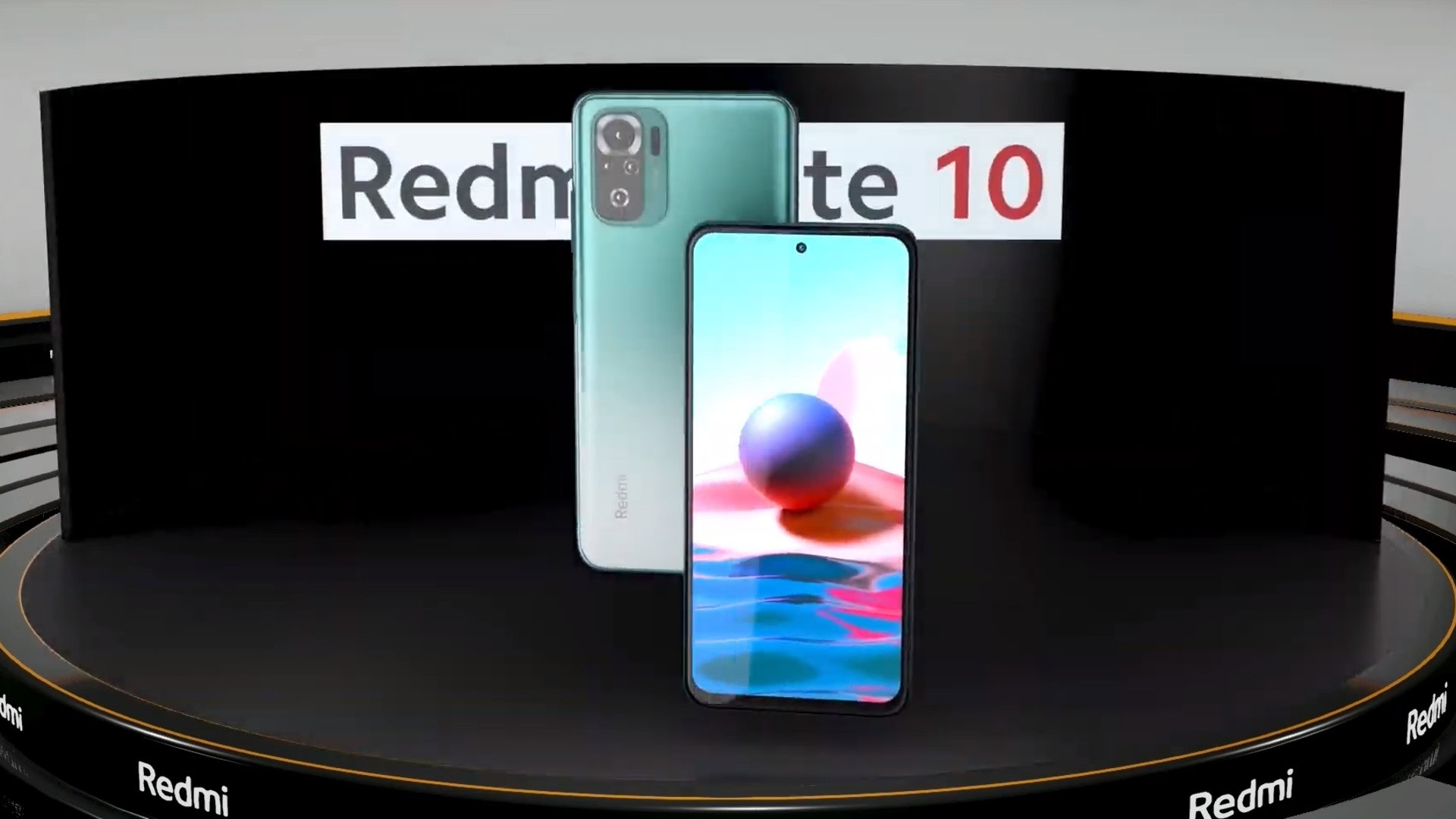Affiliate links on Android Authority may earn us a commission. Learn more.
Redmi Note 10 series hits India: OLED screens and more, starting at Rs 11,999
Published onMarch 4, 2021
The Redmi Note series is massively popular in India, owing to its competitive price and solid feature-set. The company has been teasing the arrival of the Redmi Note 10 series in the market for a while now, and it’s finally launched the new models.
We’ve got the Redmi Note 10, the Redmi Note 10 Pro (seen above), and the Redmi Note 10 Pro Max in India, and the devices share a load of features. All three pack a similar battery size, the same 33W charging solution with a charger in the box, side-mounted fingerprint scanners, 3.5mm port, IR blaster, IP53 rating, OLED screens, and dual stereo speakers.
Going to the Max
The Redmi Note 10 Max is the star of the show here, with the biggest upgrade being a 108MP main camera (Isocell HM2). The camera is capable of nona-binning, delivering images equivalent to a 12MP 2.1 micron camera. Redmi adds that the phone’s camera app packs a Night Mode 2.0 option for improved low-light snaps, as well as a Magic Clone mode and long exposure option.
Otherwise, the rest of the quad camera setup consists of an 8MP ultra-wide camera, a 5MP telephoto macro camera, and a 2MP depth lens. A 16MP camera in a center-mounted punch-hole cutout handles your selfies and video calls.
Another reason to opt for the Pro Max model is the screen, as Redmi is now offering a 6.6-inch 120Hz FHD+ OLED display (with Gorilla Glass 5). In other words, you don’t have to choose between a high refresh rate or OLED screen, as we’ve seen with several other budget phones.
In terms of performance, the new phone packs a Snapdragon 732G chipset, which is a mild upgrade over the Snapdragon 720G seen in last year’s Redmi Note 9 Pro Max. The phone also packs a 5,020mAh battery, with Redmi touting two days of usage. Your mileage may vary, of course.
What about the Redmi Note 10 and Note 10 Pro?
The Redmi Note 10 Pro isn’t a major downgrade, as it shares plenty of DNA with the Pro Max model. In fact, the only real differences between the Pro and Pro Max is that it swaps out the 108MP camera in favor of a 64MP sensor.
Otherwise, you’ve still got that 120Hz OLED screen, 33W charging with a 5,020mAh battery, 5MP telephoto macro camera, and the Snapdragon 732G chipset.
The standard Redmi Note 10 is a clear step down, as it gains a 6.43-inch OLED screen (FHD+) and a brand-new Snapdragon 678 chipset (with Adreno 612 GPU). But there are a few other cutbacks compared to the Pro and Pro Max.
The vanilla Redmi Note 10 maintains the same 8MP ultra-wide and 2MP depth sensor seen on the Pro models, but delivers a 48MP main camera instead of a 64MP or 108MP shooter. Expect a 13MP camera to handle your selfies too rather than a 16MP sensor. You’re also missing out on a 120Hz refresh rate seen on the Pro and Pro Max.
Fortunately, the Redmi Note 10 packs a 5,000mAh battery but unlike last year’s model, we’ve got 33W charging instead of 18W charging.
Pricing and availability
The 6GB/64GB Redmi Note 10 Pro Max will retail for Rs 18999 (~$261), while the 6GB/128GB option retails for Rs 19999 (~$275), and the 8GB/128GB variant can be had for Rs 21999 (~$303)
Meanwhile, the Redmi Note Pro starts at Rs 15999 (~$220) for the 6GB/64GB model, Rs 16999 (~$234) for the 6GB/128GB tier, and Rs 18,999 (~$261) for the 8GB/128GB model.
Want the cheapest Redmi Note 10 series phone? Expect to pay Rs 11,999 (~$165) for the 4GB/64GB Redmi Note 10, while the 6GB/128GB model will sell for Rs 13,999 (~$193).
Redmi India confirmed that the series will be available on Mi.com, Amazon India, Mi Home stores, and participating retailers. Expect the first sale on March 16 for Redmi Note 10, March 17 for Redmi Note 10 Pro, and March 18 for the Pro Max.


